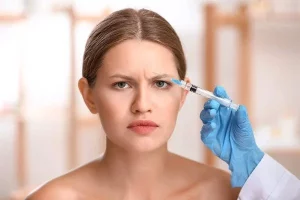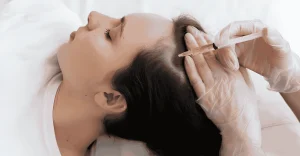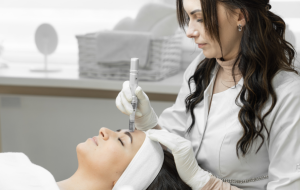Navigating the realm of aesthetic enhancements is akin to exploring a labyrinth of options. Each treatment presents its own intricacies, deserving thorough examination to discern its suitability.
Choosing between Dysport vs Botox for wrinkle reduction is akin to selecting the ideal instrument in a symphony, a choice pivotal to the harmonious outcome.
Unpacking the Basics
Botox and Dysport are both neuromodulators, derived from Clostridium botulinum bacteria, designed to address wrinkles through a temporary relaxation of muscles.
The fundamental mechanism by which these agents work is by inhibiting neurotransmitter release, effectively paralyzing the targeted muscles to smooth out fine lines and wrinkles on the skin surface.
Despite sharing a common origin, differences in formulation and diffusion properties distinguish Dysport from Botox, impacting their respective applications and results.

Dysport vs Botox: Origins and Uses
Dysport and Botox are derived from Botulinum toxin, produced by the bacterium Clostridium botulinum.
Initially used for treating neurological disorders, these neuromodulators have evolved to become aesthetic mainstays.
While Botox was the first on the market and is widely known, Dysport has a slightly different formulation, potentially offering quicker onset and diffusion characteristics.
Both agents are approved for aesthetic purposes such as wrinkle reduction, but they vary in their molecular structure, concentration, and distribution breadth when injected.
Active Ingredients Compared
Both products contain Botulinum toxin type A.
Despite a shared active principle, Dysport and Botox have distinct protein configurations. While the core neurotoxin is the same, the accompanying proteins differ, affecting their unit potency and behaviour in the body. This disparity is crucial as it influences the onset of action, the spread of the product, and potentially the duration of the effects. Consequently, these differences are pivotal in determining the specific applications of each product.
Their molecular structures govern interaction with nerve endings.
The complexity of their formulations is not to be understated. Both Dysport and Botox possess unique complexing proteins and excipients that define their use – a critical consideration for healthcare professionals in prescribing the appropriate treatment for aesthetic enhancements.
The excipients augment stability and influence distribution.
The proprietary formulations of Dysport and Botox also contain stabilizing excipients—human serum albumin and lactose in Dysport; human serum albumin and sodium chloride in Botox. These excipients serve as protective agents, ensuring the toxin’s integrity until it reaches the target site, where it exerts its neuromodulatory effect. It’s important for patients to be aware of these components, especially if they have any known allergies or sensitivities.
Pros and Cons of Dysport vs Botox
Choosing between Dysport and Botox hinges on understanding their distinct characteristics and how they align with your aesthetic goals.
- Onset of Action: Dysport may result in visible improvements slightly earlier than Botox, an appealing factor for individuals seeking quicker results.
- Diffusion: Dysport tends to spread more than Botox, which could be advantageous for treating larger areas but may require more precision to avoid unintended effects.
- Duration: Botox generally maintains its effects for a longer period when compared to Dysport, potentially reducing the frequency of treatment sessions.
- Unit Potency: It is important to note that Dysport and Botox have different unit potencies, necessitating a tailored approach to dosage by your clinician.
- Price: The cost-effectiveness of each treatment can vary; Dysport is often less expensive per unit, but more units may be required to achieve comparable results to Botox.
The decision also depends on individual responses to the treatments, which can vary due to biological differences.
Both Dysport and Botox are FDA-approved and have proven efficacy, but consulting with a medical professional who deeply understands their nuances is crucial for optimal outcomes.

Efficiency in Practice
When considering the promptness of noticeable effects, Dysport has an edge, often displaying results within several days post-injection, potentially lessening the psychological impact of waiting. In contrast, the onset for Botox may extend to a full week, requiring a degree of patience from recipients desiring rapid amelioration of wrinkles.
Comprehensively, the inherent variability in individual anatomy and physiology means that the efficiency of either neuromodulator is not universally predictable. Therefore, a consultation with an informed clinician is essential to discern between Dysport and Botox, taking into account the specific nuances of your muscular structure and aesthetic objectives.
In clinical settings, time is a valuable commodity for both practitioners and clients. Dysport’s relatively swift action can be a compelling consideration for those seeking to minimize the interval between treatment and visible enhancement.
Onset Times: A Speedy Approach
In the realm of aesthetic treatments, onset times signify the period after injection when patients start to observe a diminishing of fine lines and wrinkles. Dysport generally demonstrates a quicker debut of action, frequently manifesting improvements in as little as 2-3 days post-treatment. This expeditious result can be particularly appealing to individuals seeking swift cosmetic changes.
Botox often requires a longer duration before its effects are visible, typically around 5-7 days. This comparatively slower onset necessitates a short wait for those anticipating the rejuvenating outcomes of their procedural choice.
Clinically, faster onset times can translate into earlier signs of satisfaction for patients, as they witness a prompter return on their investment in their appearance. The capacity of Dysport to deliver such accelerated effects may serve to alleviate the tension associated with anticipation, offering a quicker glimpse of the transformative potential.
Conversely, while Botox may take longer to reveal its full capabilities, it remains a cornerstone in neuromodulator treatments with a well-established track record. It is imperative to understand these onset time frames when planning for events or social engagements, as they directly influence the timing of treatment. Both Dysport and Botox demand skilled application by a certified professional to ensure efficacy and safety, thereby reinforcing the need to select a practitioner who can adeptly navigate these temporal nuances.
Resilience: Duration of Effects
Dysport and Botox share a similar duration of effects, typically lasting between three to five months. Both treatments necessitate follow-up sessions to maintain desired results.
The longevity of results may vary based on individual metabolism rates.
Although the effects of Dysport may be noticeable sooner, it does not imply a shorter lifespan of the treatment. Both Dysport and Botox have a comparable duration, with the resilience of their wrinkle-reducing effects subject to factors such as the treated area, dosage applied, and the patient’s physiological response to the treatment.
The endurance of these aesthetic enhancements is critical to individuals who are integrating them into their self-care regimens. Continuous treatments with Dysport or Botox can not only sustain the aesthetic benefits but may also lead to a reduced frequency of treatments over time, as the muscles may become trained to remain relaxed. Regular consultations with a medical professional are essential for devising a schedule tailored to uphold the rejuvenating effects of your selected neuromodulator.
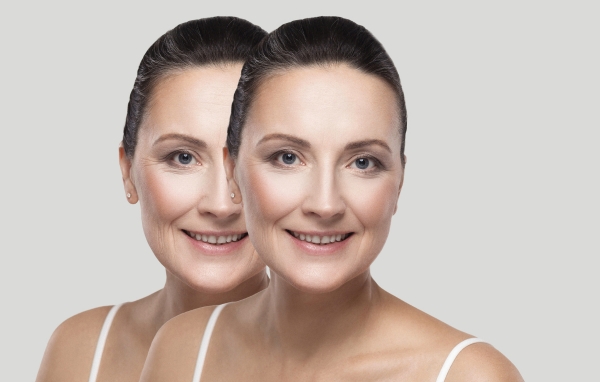
Dysport before and after
Dysport treatment begins with an assessment of your facial anatomy, focusing on dynamic wrinkles, those formed by muscle movements. It involves precisely targeting muscles responsible for frown lines, forehead grooves, and crow’s feet with a purified botulinum toxin formula, resulting in a more relaxed and youthful appearance.
Results typically manifest within a few days after injection. Notably, some patients may notice improvements as rapidly as 24 hours post-treatment.
Subsequent to Dysport administration, patients often observe a softening of facial lines, which enhances their natural expressions without a ‘frozen’ effect (a common concern among first-time patients) due to the selective action.
After the initial onset of effects, continued visibility of rejuvenation can be expected up to four months, assuming compliance with post-treatment care and individual biological responses remain favorable.
Critical for optimal results is the adherence to aftercare protocols which may include avoiding strenuous exercise or excessive heat, and maintaining a proper skincare regimen to extend the life of the treatment’s visible effects.
Finally, follow-up appointments are crucial to assess the individual’s response to Dysport. Enhancements or touch-ups may be made to hone the aesthetic outcome, depending on the patient’s unique facial dynamics and desired look.
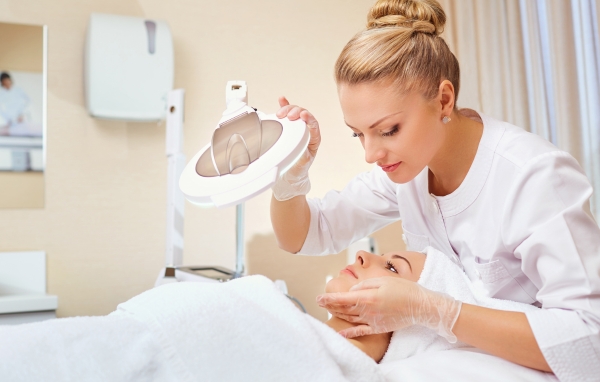
Customization for Aesthetics
When selecting between Dysport vs Botox for aesthetic enhancement, a tailored approach is paramount. Each product has distinct diffusion properties and unit potency, which can influence the precision and subtlety of results. Therefore, it is vital to understand that while both neurotoxins aim to smooth wrinkles and fine lines, the selection must be guided by individual facial morphology and patient-specific aesthetic goals.
In the context of customization, a nuanced understanding of the patient’s facial musculature is essential. For instance, Dysport may be preferred for treating larger areas due to its more extensive spread, whereas Botox represents a more concentrated treatment, apt for smaller, more targeted regions. Ultimately, the choice must be consonant with the desired outcome, factoring in muscle strength, skin thickness, and the area of the face being treated to ensure the most favorable and natural-looking results.
Precision Targeting: Facial Areas
Choosing the correct neurotoxin for wrinkle reduction requires precision targeting to ensure optimal outcomes.
- Forehead Lines: For the horizontal lines that can convey a constant look of concern.
- Frown Lines: Between the eyebrows, these can suggest a persistent furrow or anger.
- Crow’s Feet: The fine lines that radiate from the corners of the eyes during smiles or squints.
- Bunny Lines: The subtle creases on either side of the nose that appear when scrunching.
- Lip Lines: Often referred to as smoker’s lines, these are around the mouth and can give a puckered look.
- Marionette Lines: Running from the mouth corners downward, they can impart a perennial frown.
- Chin Dimpling: To smooth the pebbled texture of the chin caused by frequent movements.
Localized administration is key, as it affects both the spread and the duration of the effects.
Precise administration equates to a more tailored aesthetic, where treatments are not one-size-fits-all but sculpted to individual facial dynamics.
Dosage Distinctions: Tailoring Treatments
Dosing of botulinum toxin products like Dysport and Botox is not interchangeable due to their unique molecular structures. Specific conversion ratios must be meticulously applied when planning treatment areas strategies, ensuring doses are precise and tailored to the patient’s needs.
Understanding unit potency differences is essential for patient safety and optimal results. Clinicians must be well-versed in the pharmacological nuances between these neurotoxins.
While both toxins function similarly by reducing muscle activity, the required dosage for Dysport is typically higher due to its lower unit potency compared to Botox. A patient’s individual treatment plan might involve more units of Dysport to achieve the same effect as a smaller dose of Botox, considering factors like muscle mass, target area, and desired degree of movement reduction.
The decision regarding which neurotoxin to use should be rooted in a comprehensive understanding of these differences, as well as patient-specific anatomy and aesthetic goals. In the hands of an experienced clinician, both Dysport and Botox can be administered with precision that tailors the dosage to the nuances of the facial structure, ensuring a natural-looking reduction in wrinkles and an enhancement in the patient’s self-confidence. Depending on individual characteristics, a practitioner may recommend a “lightly” or “heavily” dosed approach to cater to the desired outcome.
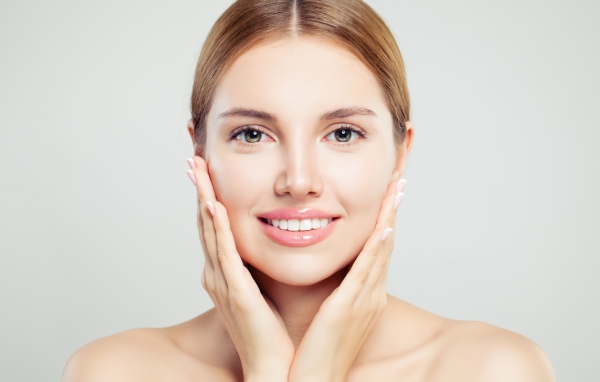
Beyond Beauty: Therapeutic Applications
While primarily recognized for their aesthetic benefits, Dysport and Botox offer therapeutic value well beyond the sphere of cosmetic dermatology. These neuromodulators have been effectively utilized in the management of certain medical conditions characterized by excessive muscle activity. Conditions such as cervical dystonia, which causes severe neck pain and abnormal head position, and blepharospasm, marked by involuntary eyelid twitching, are often ameliorated with these treatments.
Moreover, the potential benefits of Dysport and Botox extend to the realm of chronic migraine management, where these treatments can reduce the frequency and intensity of headache episodes. By inhibiting neurotransmitter release at the neuromuscular junction, both agents can alleviate overactive muscle contractions that contribute to the pain cycle associated with chronic migraines.
Muscular Disorders: Beyond Wrinkles
Botox and Dysport transcend aesthetic use.
Beyond smoothing fine lines, Dysport and Botox have significant roles in managing muscle-related disorders. In cases of muscle spasticity, conditions ranging from cerebral palsy to stroke-related muscle stiffness, these neuromodulators can decrease abnormal muscle contractions and enhance mobility and comfort for patients. Consequently, Dysport and Botox are key in the intervention of spastic disorders enhancing patient quality of life.
Spasmodic dysphonia is another condition benefiting from these treatments.
In this vocal disorder, Dysport or Botox injections can temporarily improve voice quality. By carefully administering these neuromodulators into the muscles of the larynx, physicians can reduce the involuntary spasms that disrupt speech, thus assisting individuals to regain confidence in their verbal communication.
The spectrum of applications continues – embracing various muscle-related conditions. From addressing symptoms of hyperhidrosis (excessive sweating) to alleviating strabismus (crossed eyes), these formulations play a pivotal role in both functional and psychosocial aspects of treatment. Their precise usage offers a path to significant relief for patients confronting these impairing conditions.
These agents have even facilitated advances in neurology.
By exploring the therapeutic efficacy of Dysport and Botox in conditions like myofascial pain syndrome and sialorrhea (excessive drooling), the scope of neuromodulator use continues to expand. With the 2023 approval of Botox for the treatment of pediatric spasticity, these agents further showcase their versatility in addressing complicated muscular disorders, thus reflecting an evolving landscape of therapeutic possibilities within modern medicine.
Frequency of Treatments: Managing Expectations
Each individual’s treatment plan is unique.
When discussing the frequency of treatments with Dysport or Botox, it’s important to emphasize that these are not one-time interventions. Considering that the effects are fleeting, subsequent sessions are required to maintain the desired aesthetic outcome. Typically, treatments must be repeated every three to six months, although this interval can vary based on an individual’s response and the specific indications being treated.
One must be conscientious of the commitment involved.
It’s essential to underscore that these treatments—while effective—are not permanent solutions. The temporal nature of their results calls for a maintenance strategy: a series of repeated treatments to ensure lasting efficacy. This underscores the importance of managing expectations upfront and preparing patients for ongoing sessions.
A typical regimen consists of two to four treatments per year.
This cadence aligns with the average duration of the neuromodulators’ effects. Progressive touch-ups, performed at clinically appropriate intervals, strategically maintain the reduction in wrinkle appearance, thereby boosting the individual’s self-image. It is crucial to articulate that individual variability may dictate deviations from this schedule and that a licensed practitioner should be the one to tailor the treatment plan to each person’s specific needs.
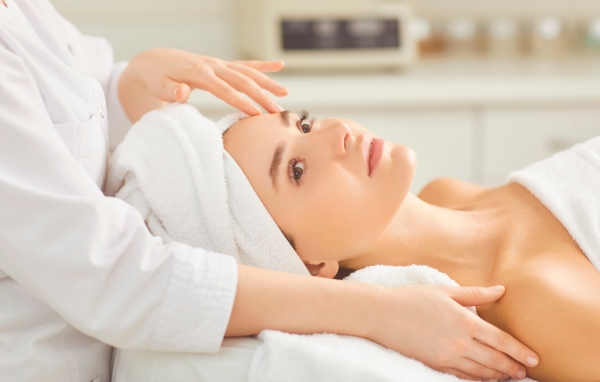
Dysport vs Botox Price
When considering Dysport and Botox, many potential patients in Toronto are particularly concerned about the cost of treatment. Pricing of these neuromodulators is often by unit, and treatments may require varying amounts depending on the areas and extent of wrinkles. However, it’s pertinent to note that Dysport units are not equivalent to Botox units in potency and dosage, which can affect overall treatment cost.
The overall expenditure for a full course of treatments should not be assessed on unit price alone. Clinicians may also consider the longevity of each brand’s effects and the number of sessions needed per year. Consequently, the cumulative financial investment over time may be a more relevant consideration for patients deciding between Dysport and Botox for their aesthetic enhancement.
Dysport vs Botox units
The unit measurement for Botox and Dysport is not directly interchangeable due to differences in their formulation. While both products aim to achieve similar clinical outcomes, the inherent disparities necessitate a specific unit conversion to ensure each treatment’s efficacy and safety. Consequently, when planning treatment, it is imperative to understand that units of Dysport and Botox are not equivalent.
Establishing equivalent efficacy requires more units of Dysport compared to Botox. However, this does not imply inferior quality or effectiveness; rather, it reflects the unique characteristics and dosing requirements of each formulation. It is critical to interpret the units within the context of the product being administered.
Patients should be aware that the number of units used in treatment will vary on a case-by-case basis and that expert evaluation is essential to determine the appropriate dosage. The quantity of units required for a desired aesthetic result with Dysport may be higher when contrasted with Botox due to differing potencies, meaning an accurate conversion is necessary to match therapeutic outcomes.
The precise translation between Dysport and Botox units is paramount for clinicians to achieve the desired aesthetic effect with a margin of safety and precision. A general understanding is that approximately 2.5 to 3 units of Dysport equate to 1 unit of Botox. However, this ratio can vary based on individual patient characteristics, targeted areas, and the specific objectives of the treatment. It is, therefore, critical to be in the care of a licensed and experienced practitioner who can navigate these nuances and deliver a tailored aesthetic intervention.
dysport cost per unit
The pricing of Dysport varies by provider.
Due to the intricate nature of aesthetic treatments, the cost of Dysport is influenced by various factors including geographic location, the expertise of the provider, and the competitive market rates. In the context of Toronto, prices are often set within a range that reflects the prevailing economic conditions and clinic overheads. Nonetheless, the unit price of Dysport is generally seen as lower than that of Botox due to the larger quantity needed to achieve similar effects.
Cost per unit may also depend on the treatment area.
Inquiring about package deals or promotions is advisable, as many clinics offer these to make treatments more affordable. Keep in mind that while price is a considerable factor, the quality of care and the practitioner’s expertise should weigh heavily in the decision-making process.
Special offers can affect the final price.
Residents should budget for their treatment considering the current average prices in Toronto, bearing in mind changes in market dynamics. As of early 2023, clients may find that Dysport costs slightly less per unit than Botox. Be sure to discuss transparent pricing with your aesthetic provider to understand the full scope of your treatment costs.
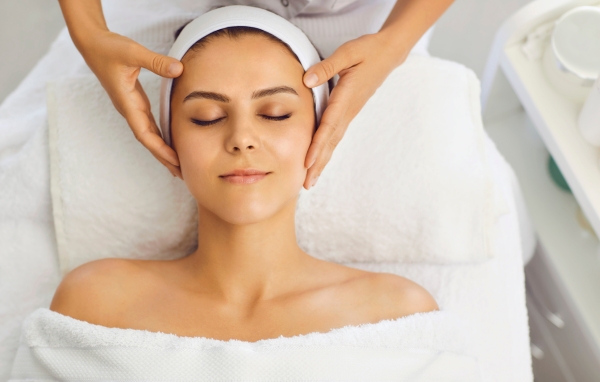
Botox cost per unit
The cost of Botox per unit in Toronto typically falls within a well-defined range, reflective of the expertise and locale of the clinic.
- Clinic location: Often, clinics situated in more affluent areas may charge a premium.
- Practitioner experience: A highly skilled injector with credentials may command higher pricing.
- Frequency of treatments: Long-term treatment plans could influence per-unit cost considerations.
- Package deals: Some clinics offer packages that reduce the overall cost per unit.
It’s important to note that while cost is a factor, the quality and safety of the treatment should be paramount.
Considering these variables, residents seeking Botox treatments can more accurately budget for their aesthetic needs.
40 units of dysport equals how much botox
When quantifying botulinum toxin treatments, it is imperative to recognize the relative potency and dosing differences between Dysport and Botox. While both Dysport and Botox are derived from the same active ingredient, botulinum toxin type A, and are used to ameliorate the appearance of wrinkles, their formulations differ, leading to variations in unit measurement.
To draw a direct comparison, approximately 40 units of Dysport are equivalent to about 10 to 15 units of Botox. This dose-conversion ratio stems from the inherent disparity in the concentration and response of the respective botulinum toxin preparations.
Clinically, it is well established that Dysport may spread to a wider area upon injection, which could influence the dilution and the ultimate quantity required. This characteristic can be particularly beneficial for treating broader surface areas, necessitating precise recalibration of the unit conversion to maintain efficacy.
Moreover, in the context of minimizing facial wrinkles, Dysport may offer a more rapid onset of action compared to Botox, potentially altering the patient’s experience and timeline of visible results. These nuanced distinctions should be diligently considered when planning treatment protocols.
In conclusion, the exact equivalent of Dysport to Botox units should not be seen as a fixed ratio but interpreted with flexibility. Expert evaluation and a tailored approach ensure that aesthetic outcomes align with patient expectations, irrespective of the neuromodulator brand selected.
100 units of Dysport equals how much Botox
The conversion is not directly proportional.
When discussing the potency equivalence of Dysport and Botox, it is imperative to understand that the units of measurement are not interchangeable. Although the two products are derivatives of botulinum toxin, they are formulated differently, leading to a variation in the unit potency and resulting clinical effect. It is generally accepted, based on clinical experience and research, that approximately 2.5 to 3 units of Dysport are equivalent to 1 unit of Botox.
This illustrates the potency disparity.
The implications for treatment are significant. With Dysport, more units are required – for instance, 100 units of Dysport would correspond approximately to 40 units of Botox, assuming a 2.5:1 ratio. However, practitioners may adjust this based on individual patient responses to achieve the desired aesthetic effect.
Patient consultation is paramount for precision.
It is essential to recognize the relative potencies when planning treatment strategies. Since the efficacy of these neuromodulators is contingent on proper dosing, patients should engage with professional practitioners who are well-versed in both product differences and the nuances of their application. As of the current year, 2023, the observed practices reflect this dynamic in dosing conversions to ensure optimal patient care and satisfaction.
120 units of dysport equals how much botox
Conversely, using the standard conversion ratio, 120 units of Dysport translate to approximately 48 units of Botox, providing a baseline for practitioners to commence treatment planning.
This conversion takes into account the potency differential previously outlined, ensuring a precise approach to neuromodulator administration.
Therefore, when embarking upon a cosmetic intervention with Dysport, it’s imperative to comprehend that more units might be indicated to realize identical effects that fewer Botox units could achieve.
However, this conversion ratio is not a one-size-fits-all solution, as each individual’s muscle mass, facial structure, and treatment objectives might necessitate tailored unit requirements.
To iterate the conversion into context, it is academia and industry standards that determine the equivalency of Dysport to Botox units; these benchmarks guide decisions but are adapted to each unique patient case.
Finally, the essence of this conversion is not just numerical but reflects a deeper understanding of the pharmacodynamics involved. Careful consideration of the individual’s physiology is paramount when translating Dysport units into the corresponding Botox dosage needed to meet their aesthetic aspirations.

Dysport vs Botox Reviews
Clinical efficacy differs amidst the two neuromodulators.
Efficacious results have been noted from patients utilizing both Dysport and Botox for cosmetic purposes. The satisfaction rate is often high among users who have opted for either product, as both are adept at reducing wrinkles and fine lines. Nonetheless, Dysport is reputed to disperse more widely than Botox, potentially leading to a smoother transition from treated to untreated areas, but also requiring a greater level of precision during administration.
Individual preferences and experiences vary widely.
Patient testimonials often highlight rapid onset with Dysport – a point of appreciation for many who seek quicker visible results. Conversely, some advocate for Botox, citing longer-lasting effects that extend the time between follow-up treatments.
Choices may reflect personal treatment objectives.
Reviews anchor heavily on the practitioners’ proficiency in delivering these treatments. Personal recommendations suggest patient satisfaction remains closely tied to the expertise of the injecting physician or clinician, rather than the chosen product alone, illustrating the significance of selecting a skilled professional for this delicate artistry.

Dysport vs Botox vs Xeomin
Dysport, Botox, and Xeomin are all injectable neuromodulators, each with unique properties, used to treat wrinkles and promote smoother skin.
Each substance operates by temporarily immobilizing the targeted muscles, thus reducing the appearance of dynamic wrinkles.
Xeomin is distinctive due to its “naked” formulation, lacking complexing proteins found in Botox and Dysport, potentially minimizing antibody resistance.
While all three treatments show effectiveness, individual responses can vary due to the differences in molecular structure and formulation.
Patients might choose Xeomin for its purity, Botox for its track record and longer-lasting claims, or Dysport for its rapid onset and spread, with final outcomes influenced by the treatment area and injector technique.
Ultimately, your choice should be informed by consultation with a medical professional experienced in facial aesthetics, who will recommend the optimal product for your specific needs and desired outcomes.
Conclusion
In assessing Dysport and Botox, a nuanced understanding is paramount to informed decision-making.
Since their introduction in the cosmetic field, both have established commendable reputations for effectiveness and safety, cementing their roles in aesthetic medicine.
Nevertheless, individual preferences and physiological responses differ, guiding patients to favor one neuromodulator over another based on onset speed, duration, and diffusion characteristics.
It is this precise tailoring of treatment to patient that underscores the importance of a thorough consultation with a knowledgeable clinician.
To conclude, either Dysport or Botox can be the cornerstone of your rejuvenation regimen, with professional guidance being the key to a successful outcome.
Faqs
Are Dysport and Botox derived from the same substance?
Both neuromodulators are formulations of Botulinum toxin type A, designed to target and relax facial muscles, nerves thereby reducing the appearance of fine lines, blocks, glabellar lines and wrinkles.
Is there a significant cost difference between the two?
The price may vary based on the clinic, geographic location, and the number of units required for treatment.
How long does it take to notice the effects of each treatment?
Dysport tends to show results within 2-3 days post-injection, while Botox may take approximately 5-7 days for the full effect to be visible.
Will my facial expressions look natural after treatment?
Both Dysport and Botox, when administered by an expert injector, are designed to create a natural-looking reduction in wrinkles while preserving facial expressiveness.
Can I return to my normal activities after receiving Dysport or Botox?
Post-treatment, patients are typically able to resume their regular activities almost immediately, although strenuous exercise should be avoided for 24 hours following the injection.
Do the effects of Dysport last as long as those from Botox?
Duration of effects may differ, with Botox typically lasting between 3-6 months and Dysport potentially having a slightly shorter efficacy period.


